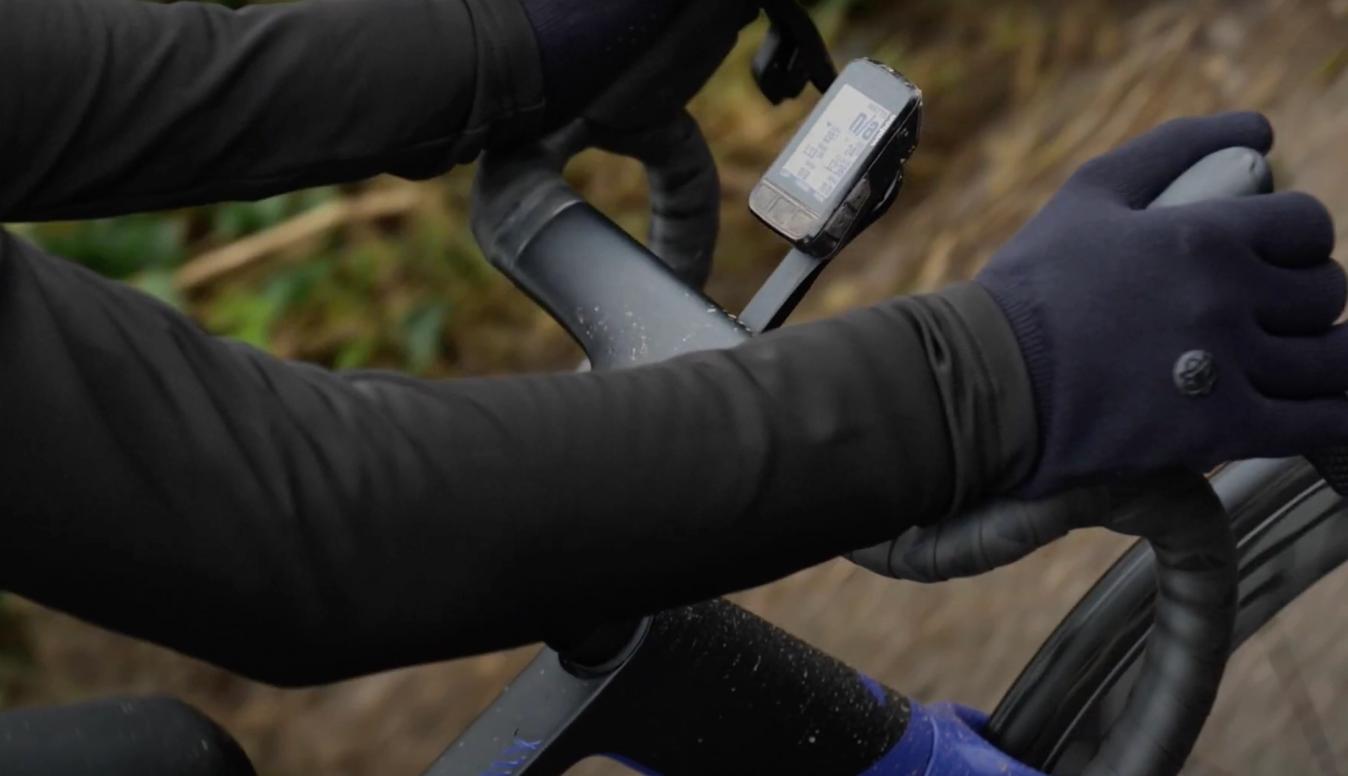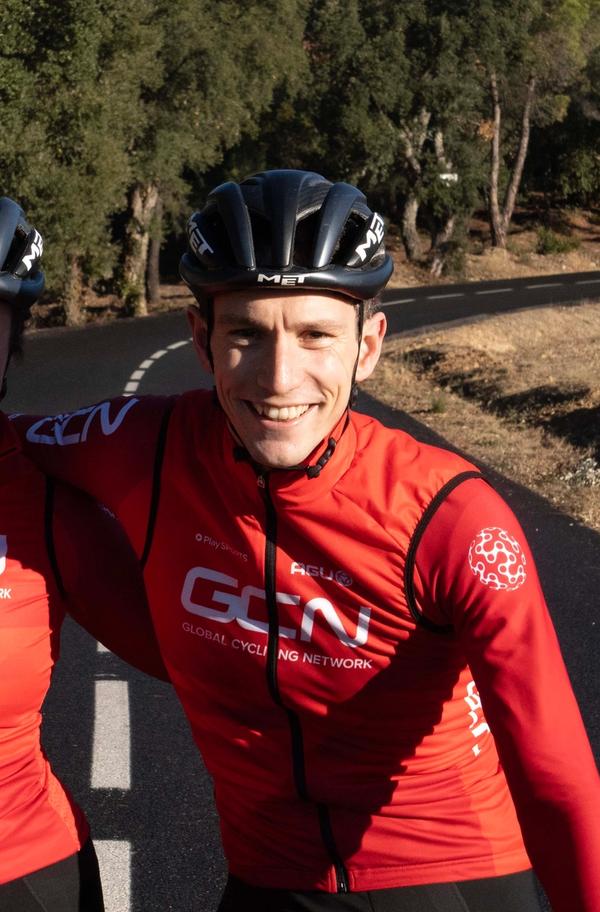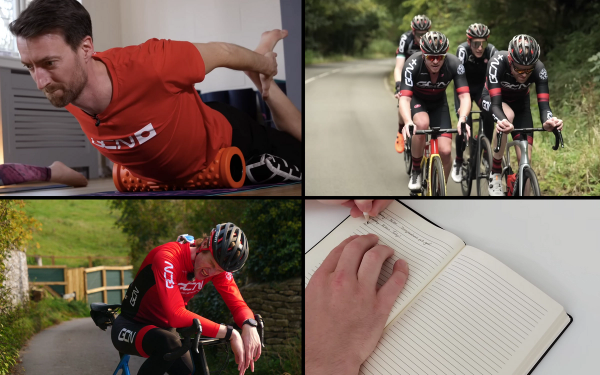Endurance Training: Zone 2 mistakes, and how to avoid them
You could be undoing all your hard training work by making these common errors
Alex Hunt
Junior Tech Writer
When the topic of training is discussed, especially endurance training, there is one overwhelming method that comes up. Zone 2 training is the principle of long, easy miles that put you in a steadily aerobic metabolic state that has numerous performance benefits. It is also very popular as it is fairly low intensity, making it an appealing training methodology.
Zone 2 is typically characterised by its intensity which is measured using either a heart rate monitor or a power meter. You'd be forgiven for thinking that if you have access to either of these, then in order to get the benefits from a zone 2 ride all you need to do is sit and chase the numbers.
Unfortunately, there is a little bit more to it than this, with it all too easy to find yourself missing out on the training adaptations associated with zone 2 training.
Simon Richardson takes a closer look at how you can avoid some of the common mistakes around zone 2 training.
What is zone 2 and why should cyclists pay more attention to it?
There are some metrics that can help you define zone 2 based on a percentage of either your threshold power or threshold heart rate. If you want to work your zone 2 range using either of these methods we have you covered in our zone training explainer.
Zone 2 is actually the easiest of the zones to ride in off of feel alone, simply by listening to your breathing. Zone 2 refers to the state at which your body is burning the highest percentage of fat for fuel that it can. As the intensity creeps up higher your body naturally switches to prioritising carbohydrates stored as glycogen in the muscles. When this change occurs you will notice that your breathing rate increases making it difficult to hold a conversation or breathe through your nose.
The physiological benefit to zone 2 training is that it is the intensity that stresses your mitochondrial function the most. This stress leads to adaptations in both mitochondrial efficiency as well as volume. As you might remember from high school biology the mitochondria are the powerhouse of your cells so any increases in this realm will boost your cycling performance.
Not listening to your body
As much as wearable tech and power meters have transformed the training landscape of cycling they are still nowhere near as good at gauging the actual effort a ride is putting on your body. From day to day, the power your body can produce on the pedals can vary significantly, much like your heart rate which is open to variance from external factors such as caffeine and stress.
If you find yourself religiously sticking to your training zones regardless of how they feel it is all too easy to find yourself riding at a higher effort than your body can handle in a fat-burning aerobic metabolic state. As much as training zones work as a rough guide, every rider will have a slightly different range. This means that if you are sitting at the upper end of zone 2 based on a zoned training model you could actually be riding above your personal zone 2.

© GCN
You cannot rely on tech to tell you what the right intensity is for your zone 2
This is why it is so important to pair your training data with how you are actually feeling. If you head out and find that even in zone 2 you find yourself struggling to hold a conversation or you cannot control your breathing, then you need to ignore the data and knock the intensity down to a point where you can easily talk and breathe through your nose.
Picking the wrong route for a zone 2 ride
To get the benefit of zone 2 training you need to spend prolonged durations riding within it. The fitter and the more capable you are as a rider the longer these durations will have to stress your mitochondria.
Picking a route that is conducive to zone 2 riding is really important to enable this. If you head out on a ride around some punchy climbs with equally steep descents then riding in zone 2 is going to be almost impossible. Equally riding around a town or city will prevent the consistent time on the pedals that zone 2 commands.

© GCN
A particularly hilly route will have you going to hard on the climbs and too easy on the descents
Consistency is the key to productive training. It is not the same to ride for a bit of time in zone 4 and then in zone 1 as it is to consistently ride in zone 2 even though they might average out at the same heart rate or power intensity.
Training in zones 3 and 4
Riding bikes is fun, and riding them fast can be even more fun. For this reason it is incredibly easy to get carried away and ride harder than you should be. The reality is that zone 2 training is very easy and can be quite slow. If you are not alert to it you can very quickly ramp up the intensity into zone 3 or even zone 4 without realising.
If this does happen you will still get some training benefits however, you will not be getting the gains to your aerobic cardiovascular system that you might think you are.
.jpeg?w=1348&auto=format)
© GCN
Going too hard can have your body reluctant to drop back down in to the right metabolic state
There is a greater issue with riding too hard on a zone 2 ride. Your body is very reluctant to switch back from the glycogen-based metabolic state once it is in it. This means that even if most of the time you are riding in zone 2, every now and then you push up into zone 3 or 4 it can take your body up to 30 minutes to drop back into its fat-burning state. With this in mind, it quickly becomes obvious that riding above zone 2 even for a little bit can scupper the intentions of the ride entirely.
Only doing zone 2 and neglecting the other intensities
As beneficial as zone 2 training is it cannot be the only form of training you do. For all the positives that this intensity can unlock, it can also leave you lacking the ability to ride at any other intensity or recover from harder efforts.
Instead, zone 2 should form part of a well-rounded training plan that has a mix of zone 2, threshold and anaerobic work to train all the different metabolic and physiological systems attributed to cycling. Variety is crucial to your cycling performance with the benefits of different training sessions positively influencing others.
Neglecting zone 2 because of a busy schedule
If you are not a pro rider like Tadej Pogačar, who can spend hours upon hours a week riding in zone 2, it can be hard to balance your training. If you only have a handful of hours per week to train spending all of them in zone 2 will certainly increase your metabolic efficiency and your endurance but at the detriment of total power development, strength and speed.
In this case, it is important to work out what you want from your cycling ability and train accordingly. Adding some threshold work or some sprint efforts at the detriment of a few extra hours in zone 2 will on the whole be more beneficial. Ultimately there will be a point in your training where the only way for you to get fitter is by spending more time in the saddle which sadly is a luxury we do not all have access to.
There is no denying it, zone 2 can be boring
Some amount of zone 2 in your weekly riding is great, however, as we have mentioned before, it is also easy and can be quite slow going. It is important to remember what it is you love about cycling and do plenty of that. Sure, spending five hours or more a week is great for your body but it might be terrible for your mind. If zone 2 training leaves you reluctant to head out for a ride then it might be worth looking at reducing your zone 2 volume.

© GCN
Group rides can be great fun but also impossible to ride at a steady zone 2 intensity
Training is all about balance and it is no use to anyone if the training you find yourself doing is demotivating and distancing you from the joy of riding.
Don’t get hung up on specifics
With everything discussed in this article, it is worth saying that keeping a healthy relationship with your training is the most important thing. Most of us are never going to make it to the Tour de France and we ride our bikes for fun and to be fit and healthy. If you aren’t hitting exact training zones or find yourself in zone 4 on a climb when you should be in zone 2 there is no need to stress. As beneficial as training can be remember that cycling should be fun rather than an additional stress in your life.
Are you guilty of making any of these mistakes? Let us know in the comments section below and make sure to check out more of our training content here.












